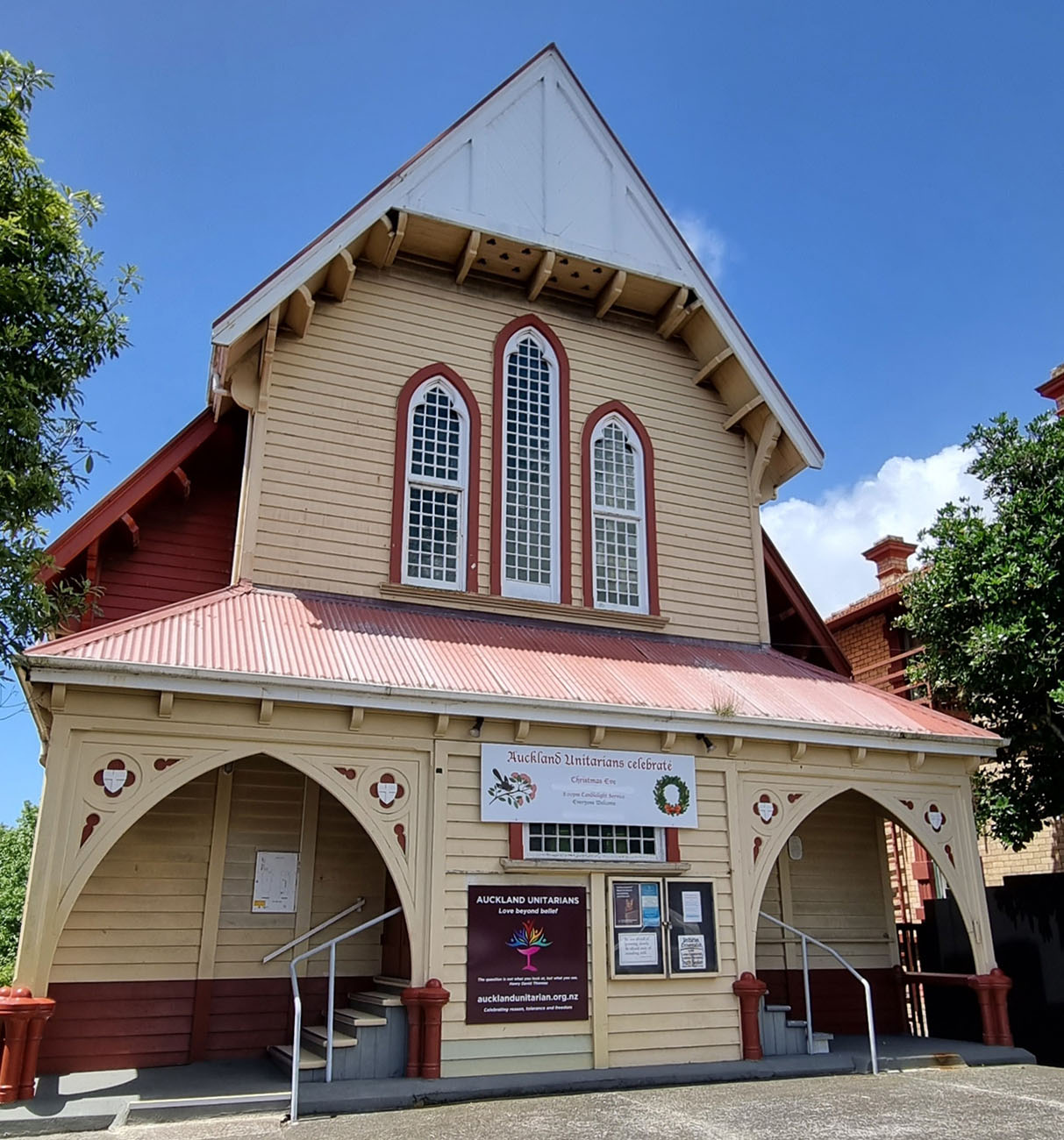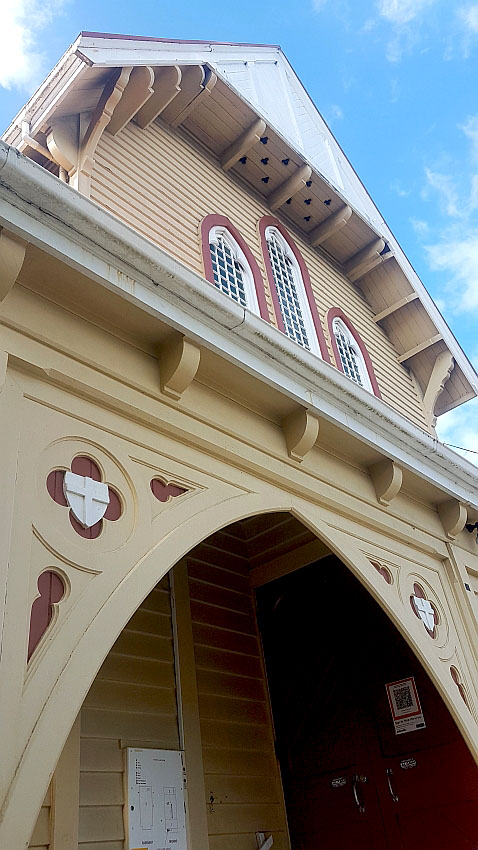This historic place was registered under the Historic Places Act 1993. The following text is from the original Proposal for Classification report considered by the NZHPT Board at the time of registration. DESCRIPTION The two foundation stones of the Unitarian Church, the first such church to be built in New Zealand, were laid at a ceremony on 17 August 1901 attended by 200 to 300 people. The opening and dedication of the building took place four months later on 4 December. The term Unitarian relates to belief in the unity of God rather than the Trinity. Unitarian belief is in reason. In Auckland members of faith met regularly for worship as early as 1863. Services were initially held in the Oddfellows Hall, Queen Street, and subsequently at Cochrane's auction market in Fort Street. The congregation gradually dispersed after the first few years, however, upon the loss of the Minister Franklin Bradley who settled in the Northern Wairoa. A fresh start was made in 1898. The Church's first minister arrived from England to take up duties in March 1990. A site was leased from the City Council in April 1901 and the present church designed by Thomas White, the Chairman of the Unitarian Church Committee. The design was based on a church White had completed in Johannesburg, South Africa. The Ponsonby church as built differs slightly from White's original design, modifications being necessary in the interests of economy. As a result a central steeple and an apse at the building's northern end were never built. The small annex at the back of the church was built in 1906 and by 1910 the building in its present form was complete, with hall, committee room and kitchen in the basement. Provision of social rooms and areas for seminars and education were an essential part of the church and its role in the community. The church challenged political and social practices it saw as inhibiting liberty and fraternity. Issues such as socialism, free trade, pacifism, prohibition, military conscription, and proportional representation were debated at the "Free Discussion Society", which commenced prior to 1910 for the teenage boys of the church. The church actively supported pacifism during World War II giving it a controversial profile during this period. The Unitarian Church library was mentioned by John A Lee, a congregation member, as being the best in Auckland. Writers Frank Sargeson and Maurice Gee were also members of the congregation. The central character in Gee's novel "Plumb" was modelled on Gee's Grandfather the Rev. J Chapple. On occasion Chapple preached in The Auckland Unitarian Church during the 1930's after his retirement to Henderson, West Auckland. Also associated with the church was New Zealand's first Rhodes Scholar, Fred Sinciaire. Harriet Russell Morrison, believed to have been the first woman elected to the Auckland Unitarian Church Committee, had earlier been active in the organisation of the tailoresses of Dunedin exploited as sweated labour. The Church is also notable as the first in Auckland to have a woman minister in Wilna Constable who jointly served from 1928 until 1934 with her husband William Constable, also a Minister. Of Unitarian Churches started in Auckland, Wellington, Christchurch and Timaru only the Auckland church has survived.


Location
List Entry Information
Overview
Detailed List Entry
Status
Listed
List Entry Status
Historic Place Category 1
Access
Private/No Public Access
List Number
7178
Date Entered
6th June 1994
Date of Effect
6th June 1994
City/District Council
Auckland Council
Region
Auckland Council
Legal description
Lot 43 City of Auckland
Stay up to date with Heritage this month
